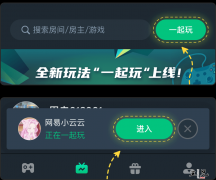隐式和显式操作符如何在C#项目中使用?针对这个问题,这篇文章详细介绍了相对应的分析和解答,希望可以帮助更多想解决这个问题的小伙伴找到更简单易行的方法。
什么是显式,什么是隐式
隐式类型转换 它是运行时自动帮你完成的,言外之意就是你不需要人为干预,比如下面的例子就是典型的 隐式类型转换。
int x = 100; double d = x;不过下面的代码则过不了编译器。
double d = 100.25; int x = d;编译程序时,将会出现下面的错误。

显而易见,上面的 double 不能隐式的转成 int,除非显式转换,那如何显式呢?可以使用如下代码。
int x = 100; double d = (int) x;人工干预后,编译器也就放行了。
创建 DTO 类接下来我们研究一下如何在 用户自定义类型 上使用 隐式 和 显式转换,比如:Class,考虑下面的类。
public class Author { public Guid Id { get; set; } public string FirstName { get; set; } public string LastName { get; set; } } public class AuthorDto { public string Id { get; set; } public string FirstName { get; set; } public string LastName { get; set; } }在上面的代码中,定义了一个 Author 实体类,然后再为 Author 定义一个数据传输对象 AuthorDTO,数据传输对象是一个数据容器,常用于在 Presentation 和 Application层 之间传递数据。
Model 和 DTO 之间的相互转换下面的代码展示了如何实现 Author 和 AuthorDto 之间的相互转换。
public AuthorDto ConvertAuthorToAuthorDto(Author author) { AuthorDto authorDto = new AuthorDto { Id = author.Id.ToString(), FirstName = author.FirstName, LastName = author.LastName }; return authorDto; } public Author ConvertAuthorDtoToAuthor(AuthorDto authorDto) { Author author = new Author { Id = Guid.Parse(authorDto.Id), FirstName = authorDto.FirstName, LastName = authorDto.LastName }; return author; }如果需要在应用程序中为若干个类写这样的转换代码,你会发现实现类之间的转换使的代码比较冗余,而且代码可读性也好不到哪里去。所以在这种场景下就是 显式 和 隐式 操作符的用武之地。
使用隐式操作符实现 model-dto 之间的转换更简单粗暴的方式就是使用 隐显式操作符,这样就避免了冗长的方法调用,让代码更加的直截了当。
下面的代码展示了如何使用 隐式操作符 将 Author实例 转成 AuthorDto 实例。
public static implicit operator AuthorDto(Author author) { AuthorDto authorDto = new AuthorDto(); authorDto.Id = author.Id.ToString(); authorDto.FirstName = author.FirstName; authorDto.LastName = author.LastName; return authorDto; }郑重声明:本文版权归原作者所有,转载文章仅为传播更多信息之目的,如作者信息标记有误,请第一时间联系我们修改或删除,多谢。


